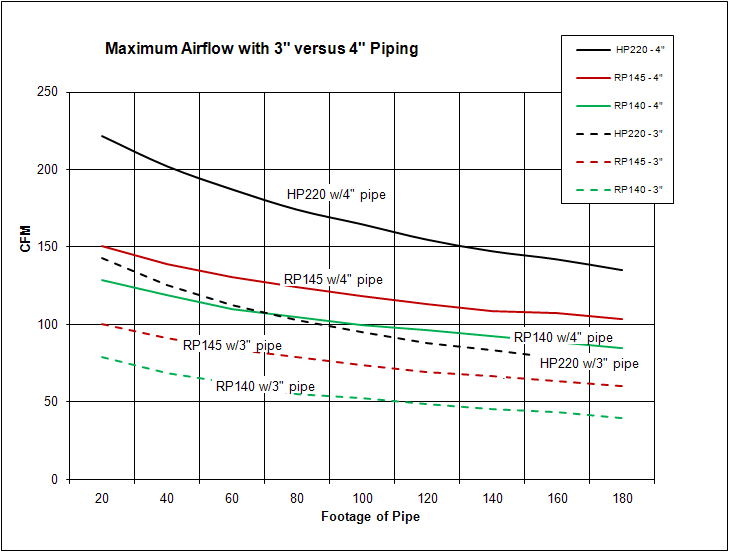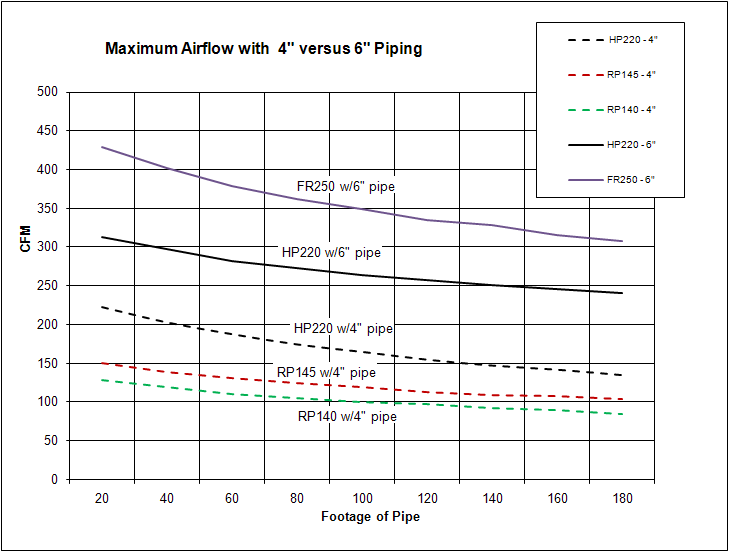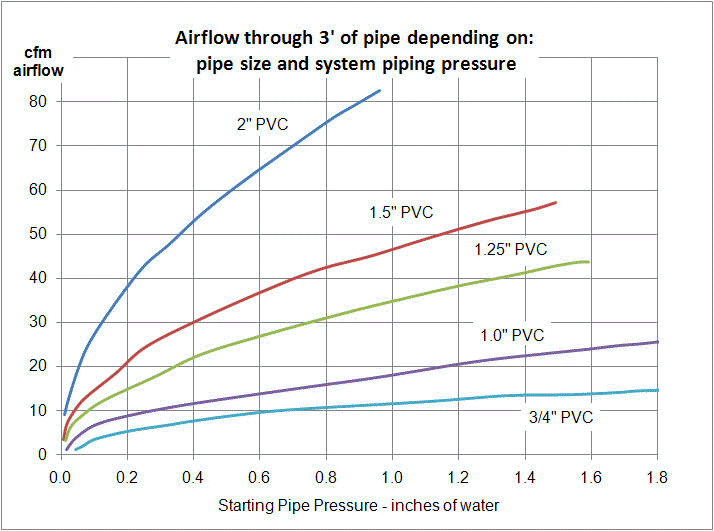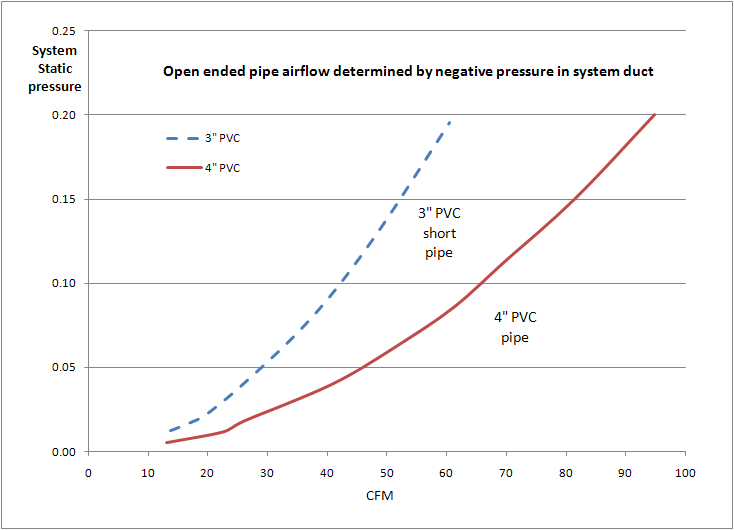 |
 |
Bill Brodhead WPB Enterprises Inc
Radon & Vapor Intrusion |
 |
Maximum Airflow through System Piping |
 |
|
WPB Home Page Choosing best Fan to use Reducing System Noise Elevation & Fan Performance All Info pages Piping Pressure Drop Fan Testing method Measuring airflow in pipes Resistance Location |
 |
|
In the chart below three different fans were connected to varying lengths of 3" and 4" piping. The end of the pipe was left open. As the piping length increased, the airflow decreased. Remember that piping restriction is due to the fittings and the piping. Visit Piping Pressure Drop page. By choosing a length of piping The maximum airflow is given for 3" and 4" piping depending upon the length of pipe and the type of fan that is used. Note that an RP140 fan (20 watt) connected to 4" piping will move as much air as an HP220 (120 watt) can move through a 3" pipe. High airflow systems are more influenced by pipe size than fan size. In other words, if you need to move more air increase the pipe size.
The next chart shows the maximum airflow for 4" and 6" pipe for different lengths of pipe and three different fans. The end of the pipe is open.
The charts below depict the amount of airflow moving through a short three foot length of piping Pressure Drop Table for 100 feet of 6" piping at different airflows:
The above chart indicates that 0.2" of static pressure in a system will allow almost 40 cfm of airflow from a 3 foot length of 2" pipe. The following chart gives the amount of airflow that would happen for 3" and 4" unrestricted pipe depending upon the pressure in the system piping that this pipe is connected to. If a sealed crawl space was going to be de-pressurized and an open 3" pipe was routed into the crawl space from the system piping that maintained 0.2 inches of static pressure you could expect to have 60 cfm from a 3" pipe and 95 cfm from a 4" pipe.
|
 |
|
Radon Job Photos Fan Performance Lots of Other Info WPB Home |
 |
|
|
|
Radon mitigation call Integra Environmental 610 346-8004 |



